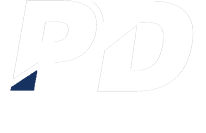Law enforcement agencies utilize various tools and procedures to identify suspects, with police lineups being a common practice. However, the issue of unconscious bias in these lineups has gained significant attention in recent years due to its potentially negative implications. Unconscious bias refers to the implicit attitudes or stereotypes that individuals unconsciously hold, influencing their perceptions and decisions.
Recognizing how these biases stem from societal and cultural influences is crucial. These biases can be implicit, residing in the subconscious, making them challenging to identify and eradicate. These biases may also significantly impact the identification process.
Unpacking police lineups
Police lineups involve presenting a witness with a group of individuals, including the suspect, to identify the perpetrator. This traditional method assumes an unbiased selection, but unconscious biases can taint the accuracy of identifications. Research consistently highlights the role of race and ethnicity in shaping unconscious biases during police lineups. Furthermore, how lineups are conducted, including subtle cues or suggestions, can inadvertently guide witnesses toward certain individuals.
Improving lineup procedures
Unconscious bias in police lineups can lead to wrongful identifications. Innocent individuals may suffer severe consequences due to flawed identification processes. Thankfully, unreliable identifications based on unconscious biases can be unveiled in the courtroom by scrutinizing the credibility of eyewitness accounts.
Reforming lineup procedures is essential in minimizing unconscious bias. This includes ensuring diverse lineup compositions, employing double-blind techniques and refining the instructions provided to eyewitnesses to enhance the accuracy of identifications.
Embracing technological advancements, such as facial recognition software, can also offer an objective and less biased alternative to traditional police lineups. However, ethical considerations surrounding these technologies must be carefully navigated.
Wrongful identification based on unconscious bias can cast doubt on a fair and just criminal identification process. Acknowledging the challenges posed by unconscious bias can be the first step in developing an effective criminal defense strategy.


